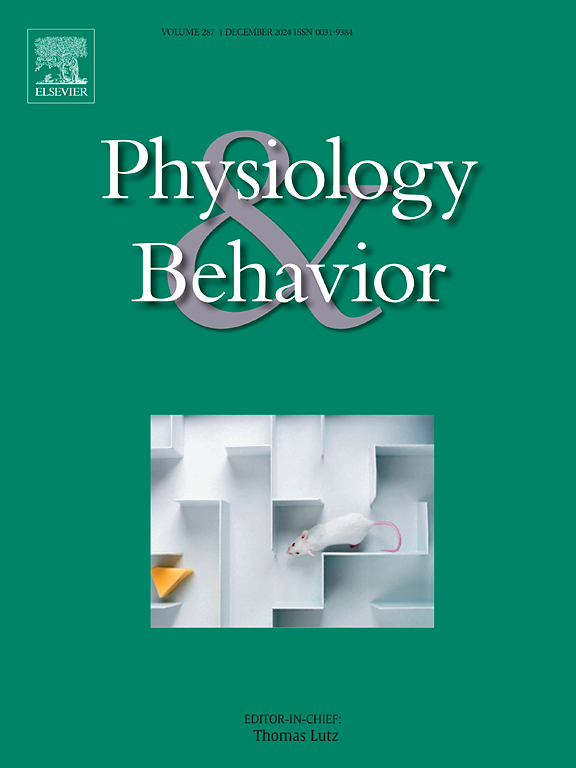High-intensity circuit training improves cognitive performance independent of changes in sBDNF levels in active college students
IF 2.4
3区 医学
Q2 BEHAVIORAL SCIENCES
引用次数: 0
Abstract
High-intensity circuit training (HICT) is an exercise modality converging aerobic and resistance exercises executed at high-intensity interspersed by recovery periods. During the HICT, the participants use their body weight as resistance. The impact of HICT on metabolic and cardiovascular markers has been reported, the effect of HICT on brain function remains unknown. The current study was focus to evaluate the impact of 24 HICT sessions on the serum BDNF (sBDNF) levels and cognition skills in young adults. Fifteen college students (22.1 ± 5.3 yr.) were randomly assigned to a control (CTRL) (n = 7) or a HICT (n = 8) group. The CTRL group continued their daily activities without restricting their physical activities, the HICT group carried out 24 HICT sessions. The sBDNF levels of all participants pre- and post-HICT intervention were determined by ELISA method. Visual memory, verbal memory, semantic verbal fluency, and attention were evaluated with specific neuropsychological tests. The heart rate variability (HRV) was recorded at rest in the supine position (5 min) for both groups at the beginning of the HICT program and 24 h after the intervention. The sBDNF levels increased in both groups at the end of the study (p < 0.0001). Visual memory (delayed recall) and long-term verbal memory significantly improved after HICT (p < 0.01). The HRV was unchanged by HICT. In conclusion, HICT might be a feasible method to improve cognition abilities in active young adults, and it is becoming a good option for college students since the intervention did not induce physiological stress in the participants.
高强度神经回路训练可提高活跃大学生的认知能力,而不依赖于sBDNF水平的变化
高强度循环训练(HICT)是一种有氧运动和阻力运动相结合的运动方式,在高强度下进行,中间穿插恢复期。在HICT中,参与者使用他们的体重作为阻力。HICT对代谢和心血管指标的影响已被报道,但HICT对脑功能的影响尚不清楚。目前的研究重点是评估24次HICT对年轻人血清BDNF (sBDNF)水平和认知技能的影响。15名大学生(22.1±5.3岁)随机分为对照组(CTRL) (n = 7)和HICT组(n = 8)。CTRL组在不限制身体活动的情况下继续进行日常活动,HICT组进行了24次HICT。采用酶联免疫吸附法(ELISA)测定所有参与者在hict干预前后的sBDNF水平。视觉记忆、言语记忆、语义语言流畅性和注意力通过特定的神经心理测试进行评估。记录两组在HICT项目开始时和干预后24小时仰卧休息时(5分钟)的心率变异性(HRV)。研究结束时,两组患者的sBDNF水平均有所升高(p <;0.0001)。HICT后视觉记忆(延迟回忆)和长期言语记忆显著改善(p <;0.01)。hct对HRV无影响。综上所述,HICT可能是一种可行的方法来提高活跃的年轻人的认知能力,并且由于干预不会引起参与者的生理应激,它正在成为大学生的一个很好的选择。
本文章由计算机程序翻译,如有差异,请以英文原文为准。
求助全文
约1分钟内获得全文
求助全文
来源期刊

Physiology & Behavior
医学-行为科学
CiteScore
5.70
自引率
3.40%
发文量
274
审稿时长
47 days
期刊介绍:
Physiology & Behavior is aimed at the causal physiological mechanisms of behavior and its modulation by environmental factors. The journal invites original reports in the broad area of behavioral and cognitive neuroscience, in which at least one variable is physiological and the primary emphasis and theoretical context are behavioral. The range of subjects includes behavioral neuroendocrinology, psychoneuroimmunology, learning and memory, ingestion, social behavior, and studies related to the mechanisms of psychopathology. Contemporary reviews and theoretical articles are welcomed and the Editors invite such proposals from interested authors.
 求助内容:
求助内容: 应助结果提醒方式:
应助结果提醒方式:


